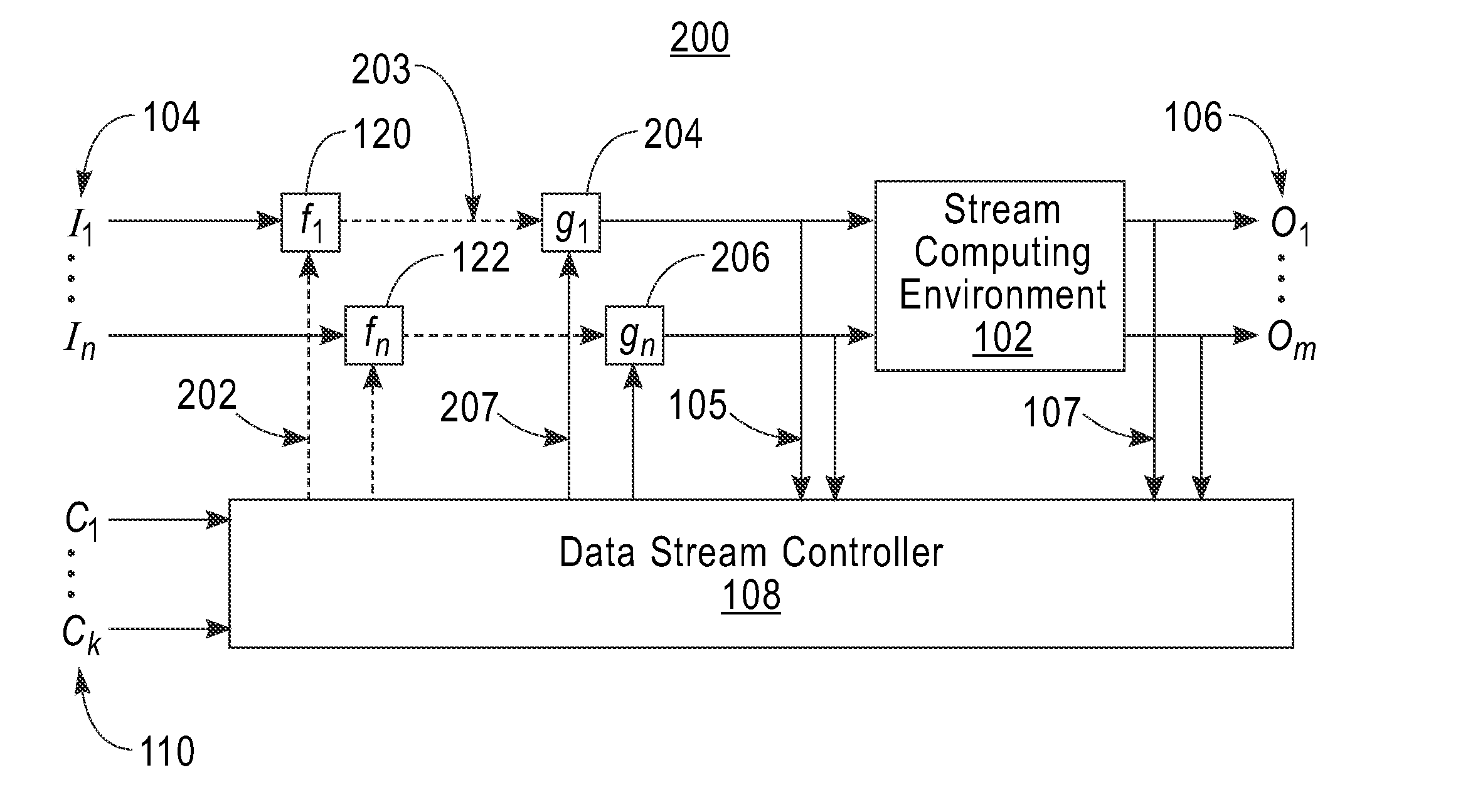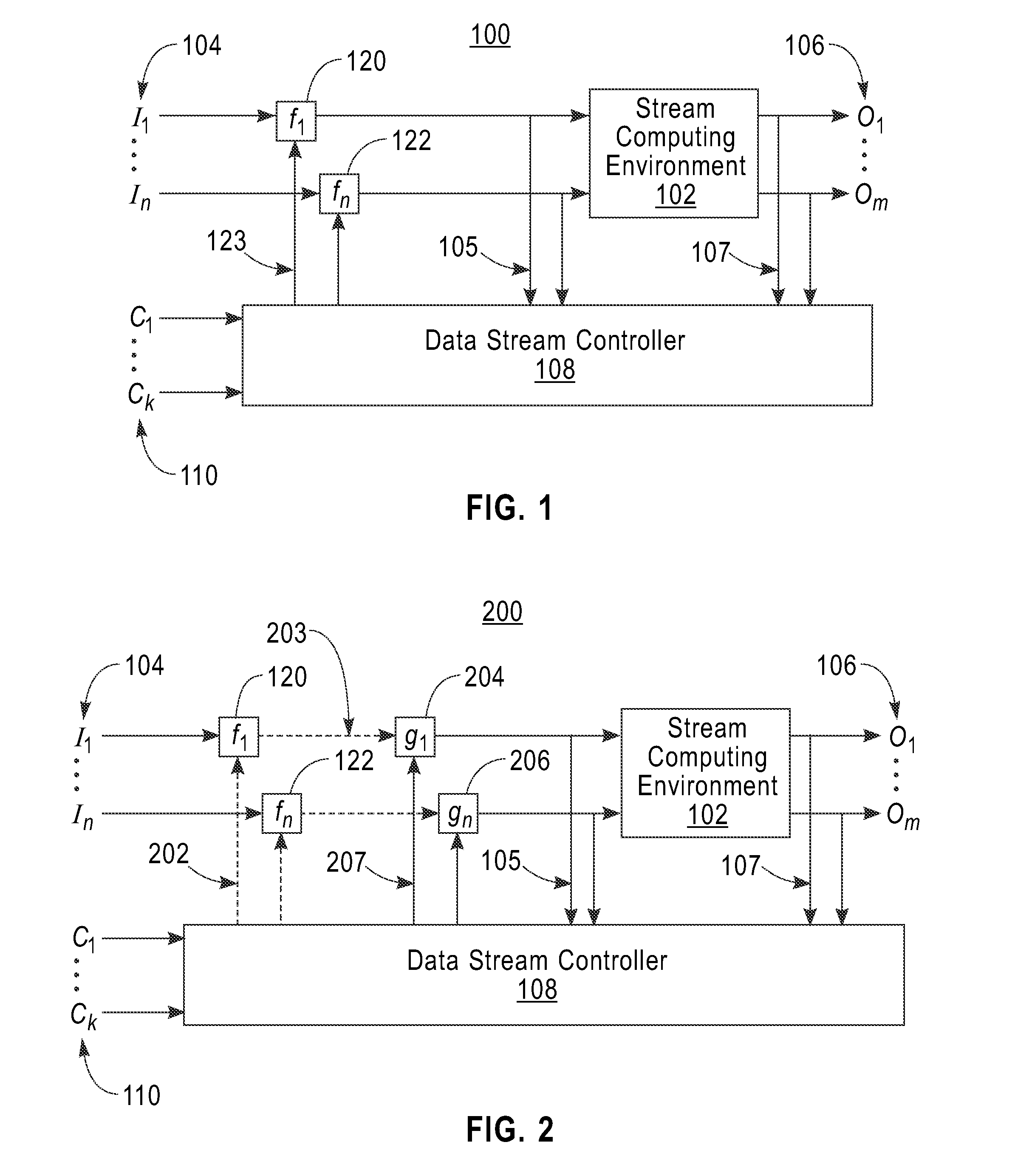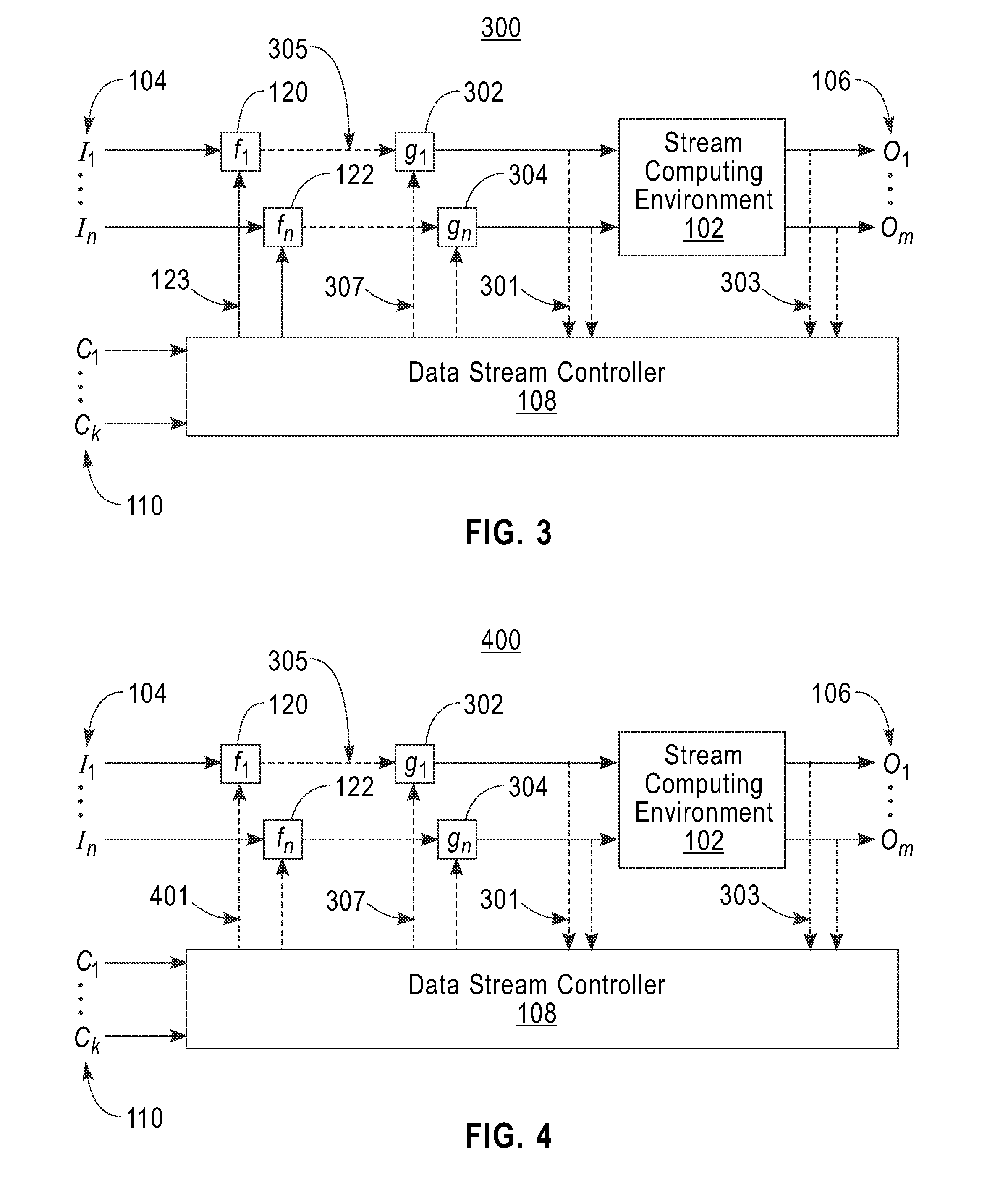Stream input reduction through capture and simulation
a technology of stream input and capture simulation, applied in the field of stream computing environments, can solve the problems of inability more data being received, and inability to use techniques to identify strategies to optimally control the frequency of data from individuals
- Summary
- Abstract
- Description
- Claims
- Application Information
AI Technical Summary
Benefits of technology
Problems solved by technology
Method used
Image
Examples
Embodiment Construction
[0018]This disclosure, according to various embodiments of the invention, provides a system and method for regulating the streaming data inputs to a stream computing environment (SCE) while maintaining the SCE's ability to produce the same outputs or information within a specified tolerance. An embodiment of the invention, for example, off-line simulates the SCE using stored data streams sampled from the actual working SCE to identify candidate data input streams for regulation in a context-sensitive manner. These data input streams can be regulated (controlled) by a data stream controller either in a binary fashion (off or on) or in a graded (modulated) manner. Input data streams are selected for control through exhaustive search through stored samples of data streams or by other analysis of the stored data streams (e.g., by using heuristics related to the stored data streams). An important aspect of the analysis is that the reduction in input data does not affect the actual workin...
PUM
 Login to View More
Login to View More Abstract
Description
Claims
Application Information
 Login to View More
Login to View More - R&D
- Intellectual Property
- Life Sciences
- Materials
- Tech Scout
- Unparalleled Data Quality
- Higher Quality Content
- 60% Fewer Hallucinations
Browse by: Latest US Patents, China's latest patents, Technical Efficacy Thesaurus, Application Domain, Technology Topic, Popular Technical Reports.
© 2025 PatSnap. All rights reserved.Legal|Privacy policy|Modern Slavery Act Transparency Statement|Sitemap|About US| Contact US: help@patsnap.com



